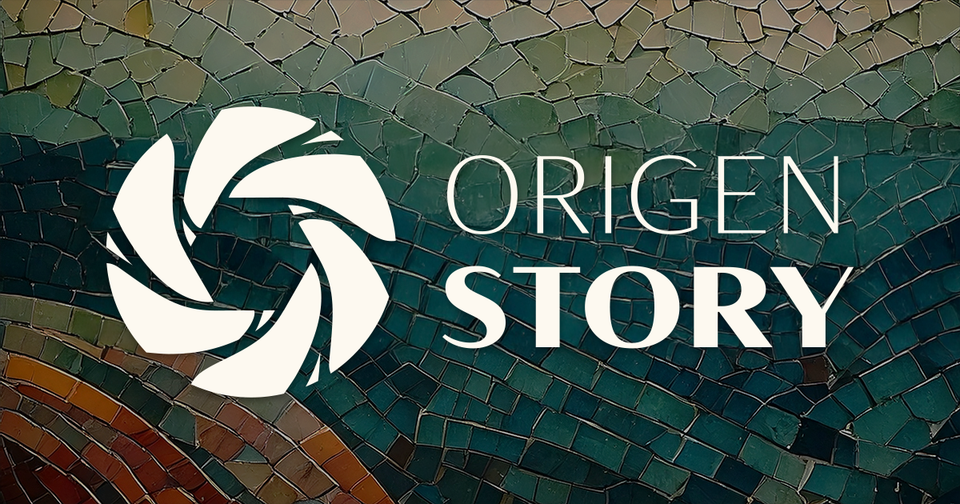Hollywood, Murrow, Hitchcock, and Why I’m Fully Embracing AI in Fact-Based Visual Storytelling

I’m launching something new today: Origen Story, a creative studio aimed at navigating AI's impact on visual storytelling and developing ethical frameworks through hands-on, fact-based work.
To understand why I’m doing this now, let's go back to the early 2000s.
Twenty years ago I did something kind of crazy. I had built the beginnings of a comfortable career realizing my dream of making movies in Hollywood. I was working on superhero movies and lighting some of my favorite TV shows like Alias and The West Wing. I gained membership in an IATSE union before I could legally drink, a feat that took most people in L.A. decades to achieve.
And yet, I left it all behind for a career in journalism.
The events of the early 2000s changed many lives, including mine. 9/11 made me realize how little I knew about the world. The profound complexities of the wars in Afghanistan and Iraq deeply affected my generation, including peers enduring multiple tours. I yearned to make sense of it all.
Simultaneously, we stood on the brink of a major transformation in visual storytelling.
On every set, the transition to digital filmmaking sparked intense discussions about the industry’s future. (Quentin Tarantino hated it and Christopher Nolan still does.) Yet every aspiring filmmaker I knew was actively experimenting with digital tools, eager to understand their potential.
There was a sense of urgency, because mass adoption of higher bandwidth meant the Internet, long a land of text and low-res images, would soon stream video to mass audiences. We knew change was coming, but didn’t yet know how to navigate it.
Early in my transition to journalism, I was introduced to a historic quote from Edward R. Murrow that became my beacon:
"This instrument can teach, it can illuminate; yes, and even it can inspire. But it can do so only to the extent that humans are determined to use it to those ends. Otherwise, it's nothing but wires and lights in a box."
— Edward R. Murrow, 1958 RTNDA Speech
He was speaking about the early commercialization of broadcast news, and television's unrealized potential. The speech didn’t help his career. It arguably ended it. Yet, it has inspired generations of journalists. What resonated with me was this idea of intention in storytelling.
Learning film's language before transitioning to journalism gave me an advantage. Filmmaking consists of thousands of small choices made with clear intent to make audiences feel a certain way.
- Want to make someone look powerful? Shoot them from a low angle.
- Want them to appear weak and diminished? Shoot from above.
Every cut between shots triggers our pattern-recognizing 'lizard brain' to create an association.
Early Soviet filmmaker Lev Kuleshov discovered this phenomenon, now called the Kuleshov Effect.
He found that pairing identical shots with different cuts creates new associations.
- Cut from a man to a bowl of soup? He's hungry.
- Cut to a coffin instead? He's mourning.
If this seems abstract, let Alfred Hitchcock explain it in under a minute:
This phenomenon fascinated me throughout my career transition. At journalism school and later at the AP, I gravitated toward experiments with interactive multimedia—ways to let audiences explore stories non-linearly rather than just watch them unfold. Whether creating traditional documentaries or early digital experiments, the Kuleshov effect remained constant: every choice shapes meaning.
Even in the most objective journalism, there are always a thousand subjective choices in the crafting of a story.
If you’ve ever watched a news story and truly felt something by the end of it—pain or loss, hope or joy—it was because a skilled storyteller introduced the characters just right, properly set the scene and the stakes, and then expertly timed the reveal of information to build towards an emotionally resonant moment, one that spoke to our shared humanity.
This works because storytelling frameworks have evolved over thousands of years. They're inherently human: fables that teach us to avoid threats, the expression of dreams that bind us toward collective action.
These principles guided my work over the last decade and a half—first at the Associated Press, then co-running Vignette, where our team produced stories across forty countries for news outlets and humanitarian organizations facing the world's most complex challenges. Now, with generative AI's swift advancement, we face urgent questions about how to apply these principles responsibly.
That's why I'm launching Origen Story, a creative studio based in Barcelona. The name comes from Antoni Gaudí's philosophy. In Catalan, he says "L'originalitat consisteix a tornar a l'origen." Originality means returning to the origin.
With AI's advancement, we face real questions about storytelling's evolution. We're entering a world where most people will, by default, not believe what they see. What happens when anything we imagine can be rendered in high definition?
At Origen Story, we don't pretend to have all the answers. But three core principles guide us:
- Intentional Storytelling - We tell stories with purpose, building trust through ethical practices and clear editorial frameworks.
- Radical Transparency - We establish content provenance and stay honest about our tools, processes, and subjective choices.
- Fearless Innovation - We explore new forms of storytelling while maintaining our commitment to truth and human connection.
These principles will guide everything we explore together. In this newsletter, I'll examine real-world case studies, interview journalists and filmmakers pushing boundaries responsibly, and develop practical frameworks for maintaining editorial integrity while embracing technological possibility.
There are legitimate reasons to be concerned about AI and what it means for shared truths and our information ecosystem. But those risks shouldn't paralyze us from shaping how these tools are used. Now more than ever, we need humans determined to use AI ethically to tell stories with intention.
If not, then these acres of server farms built to handle all this AI compute will become just our latest iteration of wire and lights in a box.
P.S. If you’re also grappling with these questions, I would love to hear from you. What are you experimenting with? What are your concerns? Reply and tell me what AI questions keep you up at night.
